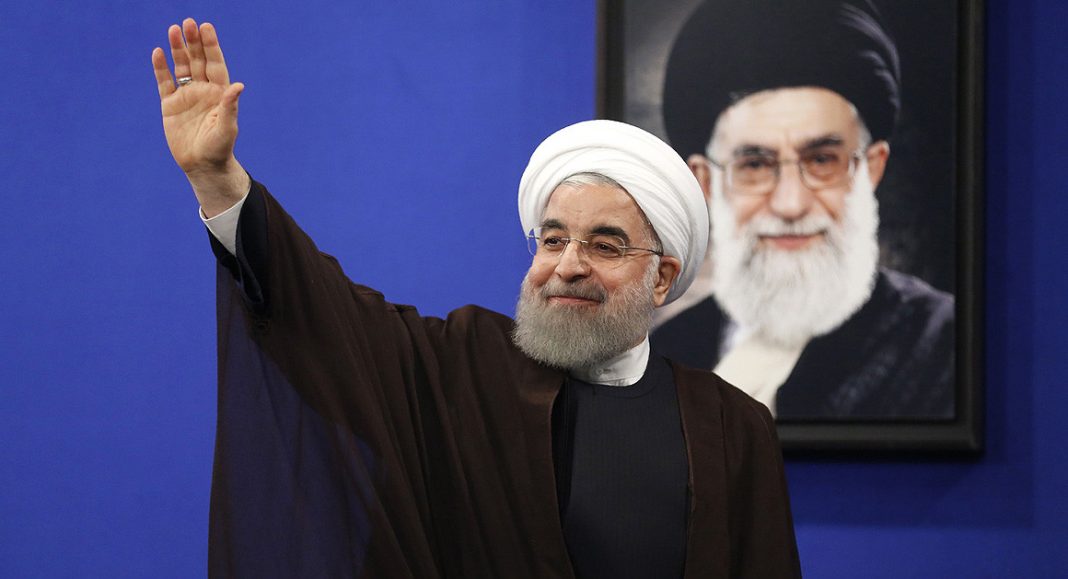US can use North Korea to pressure Iranian regime
بامكان أميركا الإستفادة من كوريا الشمالية للضغط على النظام الإيراني
Dr. Majid Rafizadeh/Arab News/June 24/18
The agreement signed between US President Donald Trump and North Korean leader Kim Jong Un this month was indeed historic, but it should not be confined to Pyongyang’s nuclear program or US-North Korea diplomatic ties. Washington ought to view the start of a new relationship between North Korea and the US as a perfect opportunity to pressure the Iranian regime and its militias.
It is worth noting that North Korea enjoys a formidable and multilateral relationship with Tehran. The most significant area is related to nuclear activities. Iran has long been dependent on North Korea’s technological capabilities to advance its nuclear program. This is due to the fact that other nuclear states have been reluctant to unreservedly assist the revolutionary and ideological state of the mullahs in achieving its nuclear ambitions.
Between the Islamic Republic and North Korea, there have been several governmental agreements to set up joint operations, such as creating laboratories and exchanging technology, information, experts and scientists in the area of nuclear science. Although the Iranian regime’s lobbyists argue there is no relationship between Tehran and Pyongyang in the nuclear field, evidence shows otherwise. Iran’s chief nuclear scientist, Mohsen Fakhrizadeh-Mahabadi, reportedly traveled to North Korea to witness a nuclear test. In addition, the UN Security Council has previously released a report pointing out that North Korea continued “to market and export its nuclear technology to certain other states.”
It is also claimed that the centrifuge structure that the Iranian regime uses shares striking commonalities to the ones utilized by North Korea. Centrifuges are an integral part of the process of enriching uranium to develop nuclear weapons or to fuel nuclear power plants.
Trump ought to make any US deal with North Korea be based on the condition that Pyongyang halts its nuclear activities with Iran.
To address these concerns, Trump ought to make any deal with Kim be based on the condition that Pyongyang halts its nuclear activities with Iran’s ruling clerics. In addition, due to the long-term relationship between Iran and North Korea, Pyongyang can be a key source for obtaining details about Iran’s clandestine nuclear activities.
For example, one of the most controversial issues that the International Atomic Energy Agency has long failed to resolve is whether or not Iran’s nuclear program has a military dimension. Iran has banned inspectors from visiting its Parchin military site, which is believed to be the location where Iran’s nuclear weapons program is based. If the US president cannot persuade North Korea to disclose such information, Congress can refuse to lift any sanctions or ratify any treaties until Pyongyang opens Iran’s nuclear file.
The second critical area is linked to military cooperation, including the provision of submarines and ballistic missile technology. It has been claimed that if it were not for North Korea’s assistance, Iran’s ballistic missile program would not have advanced to the current level. Iran currently has the largest ballistic missile arsenal in the Middle East. Although the Iranian regime refuses to shed light on its ballistic missile activities with North Korea, the two countries enjoy sophisticated cooperation when it comes to short, medium and long-range missiles. Both the Iranian regime and North Korea have yet to sign the Intermediate-Range Nuclear Forces treaty, which bans the development of short, medium and long-range missiles.
North Korea has also helped Iran to obtain Yono-class submarines, which are difficult to detect when operating in shallow water and running on batteries, and are only utilized by Tehran and Pyongyang. The Pentagon last year revealed that Iran test-fired missiles from a Yono-class submarine in the Gulf and Strait of Hormuz. It should be noted that, based on the latest reports, alleged Tehran-Pyongyang ballistic missile and technological cooperation has escalated since the Joint Comprehensive Plan of Action, commonly labeled as the Iran nuclear deal, was reached in 2015. The close similarities between Iran’s ballistic missiles, such as EMAD, and the North Korean Rodong missiles are compelling.
The US has the opportunity to use the sanctions relief card to push North Korea into discontinuing its ballistic missile collaboration with the Iranian regime. Having been hit by crippling unilateral and multilateral sanctions, one of the major reasons that North Korea has been cooperating with Tehran is most likely to obtain hard currency. The US can pledge to lift economic sanctions against North Korea in exchange for Pyongyang halting its ballistic missile collaboration with the mullahs. The lifting of sanctions is better applied gradually in order to verify the process.
Another issue is that, if North Korea is genuine about improving its ties with the US, it must refuse to join the Islamic Republic in promoting an anti-American agenda, destabilizing the region and promoting its militias.
The latest historic developments between the US and North Korea provide a ripe opportunity for the Trump administration to pressure Pyongyang into halting its military ties with the Iranian regime — which would compel Tehran to stop its aggressive behavior in the region — and revealing the nuances and military dimensions of Iran’s nuclear program.
Dr. Majid Rafizadeh is a Harvard-educated Iranian-American political scientist. He is a leading expert on Iran and US foreign policy, a businessman and president of the International American Council. Twitter: @Dr_Rafizadeh






















